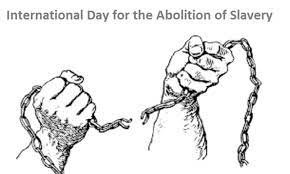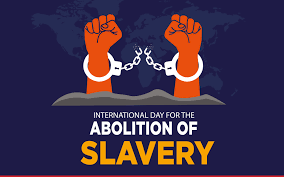International Day for the Abolition of Slavery 2023
The International Day for the Abolition of Slavery, observed on December 2nd annually, serves as a poignant reminder of the historical and ongoing fight against the abhorrent practice of slavery. This day holds immense significance, resonating globally as a platform to raise awareness, denounce modern-day slavery, and reaffirm the commitment towards its eradication.

Why This News is Important
The significance of this day lies in its role as a catalyst for advocating human rights and combating contemporary forms of slavery. In today’s world, despite legal prohibitions, millions still suffer under various forms of exploitation, such as forced labor, human trafficking, and bonded labor. This observance calls for collective action to eliminate these practices, emphasizing the need for international cooperation, legislative measures, and social awareness.
Historical Context
The roots of this day trace back to December 2, 1949, when the United Nations General Assembly adopted the Convention for the Suppression of the Traffic in Persons and of the Exploitation of the Prostitution of Others. Since then, the International Day for the Abolition of Slavery has been observed, aiming to eradicate all forms of slavery worldwide.
Key Takeaways from International Day for the Abolition of Slavery 2023
| Serial Number | Key Takeaway |
|---|---|
| 1. | The day marks a collective effort to eradicate slavery worldwide. |
| 2. | It raises awareness about modern slavery and human trafficking. |
| 3. | The event emphasizes the importance of legal measures and enforcement against slavery. |
| 4. | Governments and organizations promote initiatives for victims’ rehabilitation and support. |
| 5. | International cooperation is crucial to combat transnational slavery effectively. |
Important FAQs for Students from this News
1. What is the purpose of observing the International Day for the Abolition of Slavery?
- The day serves as a global platform to raise awareness and denounce modern-day slavery, aiming for its eradication worldwide.
2. What historical event led to the establishment of this observance?
- The adoption of the Convention for the Suppression of the Traffic in Persons and of the Exploitation of the Prostitution of Others by the United Nations General Assembly on December 2, 1949, initiated the observance of this day.
3. What are some forms of modern-day slavery highlighted on this occasion?
- Modern-day slavery encompasses forced labor, human trafficking, bonded labor, and other exploitative practices.
4. What are the key takeaways from observing this day?
- The primary takeaways include the need for collective action to eradicate slavery, raising awareness, promoting legal measures, supporting victims, and emphasizing international cooperation.
5. How can individuals contribute to the fight against modern-day slavery?
- Individuals can contribute by staying informed, supporting anti-slavery initiatives, advocating for human rights, and reporting any suspected cases of exploitation or trafficking.
Some Important Current Affairs Links


















